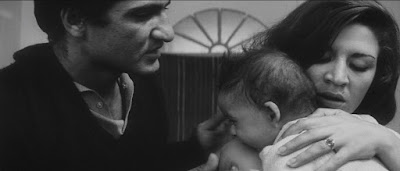گزارش فستيوال بينالمللي فيلم برلين، 2016
خداحافظ اروپا
احسان خوشبخت
بزرگترين موج مهاجرت و جابجايي انساني از زمان جنگ جهاني دوم بر اثر تنش
نظامي، نابساماني اقتصادي و اختناق سياسي امروز كل اروپا را به وضعيتي اضطراري
رسانده است. در اين ميان آلمان ، كشور ميزبان شصت و ششمين دورۀ فستيوال فيلم برلين
(مشهور به برليناله) به عنوان مهره اصلي اتحاديه اروپا و به خاطر سياستهاي نسبتاً
بازترش در استقبال از مهاجران نه تنها در موقعيتي حساستر قرار دارد، بلكه بعضي
آلمانيها احساس ميكنند روحيه كشور در طي يك سال از اين رو به آن رو شده است.
برليناله بلافاصله به اين موقعيت واكنش نشان داد. نه تنها بخشي از بليطهاي
سينماي به پناهندگان تعلق گرفت بلكه آنها به مضمون كليدي فستيوال هم بدل شدند و
حتي جرج كلوني را ديدار آنگلا مركل برد. با آن كه شايد فكر كنيد يك پتوي گرم و
تميز براي يك پناهجو به بليط فيلم تازه برادران كوئن ارجحيت دارد، اما در نهايت
اين فيلمها بودند كه قواعد بازي را تعيين كردند.
1
در دنياي سينما، بيشتر منتقد ماندن در محدودۀ امن فيلمهايي كه توهم تيزهوشي
به بيننده ميدهند را ترجيح ميدهند. قرن بيست و يكم، قرن راحتالحلقومهاست، چيزي
كه بشود با يك حركت بلعيد. مثلاً فيلم افتتاحيه درود بر سزار (برادران
كوئن؛ آمريكا) را در نظر بگيريد، يك «پاستيش» محض كه داستانش در همان دورهاي كه
ميگذرد كه يكي از بهترين فيلمهاي سال، ترامبو (جي روچ)، دربارۀ آن ساخته
شده، يعني دهه 1950، سالهاي مككارتي، آزمايشهاي اتمي و تب فيلمهاي سينمااسكوپ.
در فيلم برادران كوئن بعضي از پيشروترين سينماگران آمريكايي، يعني نويسندگان چپ
هاليوود، به عنوان دستهاي از آدمهاي نيمه مجنون نشان داده شدهاند كه جملات قصار
«سرمايه» ماكس را بلغور ميكنند، لهجههاي خارجي دارند (حتي اسم متفكر اصليشان
ماركوزه است و براي محكمكاري به او لهجه آلماني دادهاند و قيافه اينشتيني دادهاند)
و در نهايت ستارۀ يك فيلم انجيلي به نام «درود بر سزار» (با بازي جرج كلوني) را
براي اخاذي از استوديو و فرستادن پول به شوروي به گروگان ميگيرند. از آن طرف
استوديو به لطف وكلاي بيترحم، مزدبگيران، شايعهپردازان و يك كابوي (با بازي آلدن
ارنرايك) يك تنه به مبارزه با نويسندگان ميرود. فيلم لحظههاي بامزه خودش را
دارد (به خصوص بخشهاي مربوط به كارگردان انگليسي ساديست، با بازي رالف فاينز) اما
همه چيز را تا حد ممكن ساده و حتي تحريف كرده كه كسي مجبور نشود با اطلاعات قبلي
دربارۀ يكي از بزرگترين حماقتهاي هاليوود در تصفيه نويسندگان مهماش به سينما
بيايد و يا اگر اين اطلاعات را ندارد، به خودش زحمت بدهد و بعد از فيلم لاي يكي دو
كتاب را بازكند. سينماي از اين دست، قبل و بعد ندارد. حادثهاي است كه يكبار
اتفاق ميافتد و به نفعش است كه فقط روي همان دو ساعت سرمايهگذاري كند.








